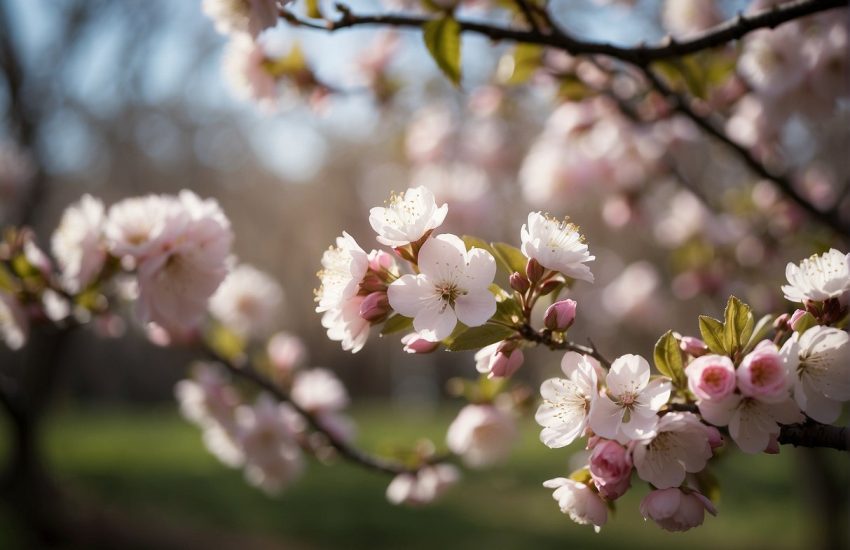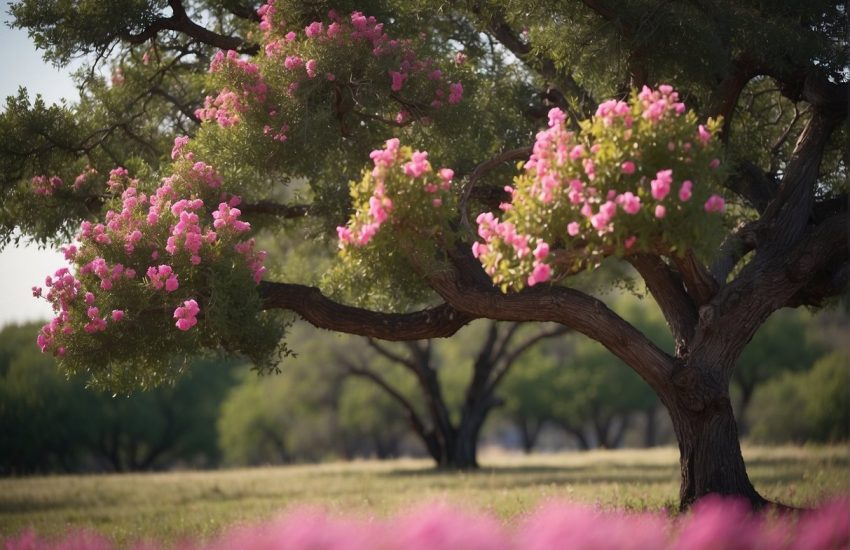Red Flower Trees in Florida: A Guide to the Most Beautiful Varieties
Red flower trees are a common sight in Florida, adding vibrant colors to the state’s lush greenery. These trees are known for their striking red blooms, which can range from deep crimson to bright scarlet. While there are many different species of red flower trees found throughout Florida, some of the most popular include the Royal Poinciana, the Bottlebrush, and the Firebush.

The Royal Poinciana is perhaps the most iconic of all red flower trees in Florida. This tree is known for its large, showy blooms, which can measure up to 10 inches across. The Royal Poinciana is a deciduous tree, meaning that it sheds its leaves in the fall and winter months. During the spring and summer, however, it is a magnificent sight, with its bright red flowers standing out against its lush green foliage. The Bottlebrush, on the other hand, is a smaller tree that is known for its unique, brush-like blooms. These flowers are typically a dark red color and can last for several weeks. Finally, the Firebush is a popular choice for gardeners looking to attract hummingbirds and butterflies. This shrub produces bright red flowers throughout the year, making it a great addition to any garden or landscape.
Overview of Red Flowering Trees in Florida

Florida is known for its vibrant tropical flora, and red flowering trees are no exception. These trees add a pop of color to the landscape and are a popular choice for landscaping and gardening. In this section, we will explore the significance of red flowering trees and their common characteristics.
Significance of Red Flowering Trees
Red flowering trees are highly valued for their aesthetic appeal and are often used in landscaping to add a touch of color to gardens and parks. The vibrant red flowers are eye-catching and can make a bold statement in any landscape. Additionally, red is a symbol of love and passion, making these trees a popular choice for romantic occasions such as weddings.
Common Characteristics
Red flowering trees come in a variety of species, each with its unique characteristics. However, some common characteristics include:
- Evergreen foliage: Many red flowering trees have evergreen leaves, which means they stay green throughout the year, making them an ideal choice for landscaping.
- Drought tolerance: Some species of red flowering trees are drought-tolerant, making them an excellent choice for Florida’s hot and dry climate.
- Attract pollinators: Red flowers attract pollinators such as bees and butterflies, making them an essential part of the ecosystem.
Some of the most common species of red flowering trees in Florida include the Royal Poinciana, the Bottlebrush, and the Firebush. These trees are easy to grow and maintain, making them a popular choice for both homeowners and landscapers.
In conclusion, red flowering trees are a beautiful addition to any landscape, and Florida’s tropical climate makes it an ideal location for growing them. Their vibrant colors and unique characteristics make them a popular choice for landscaping and gardening, and they are sure to add a touch of beauty to any outdoor space.
Popular Species of Red Flower Trees

Florida is known for its vibrant and colorful flora, and red flower trees are no exception. Here are some of the most popular species of red flower trees that can be found in Florida:
Royal Poinciana
The Royal Poinciana (Delonix regia) is a stunning tree that can grow up to 40 feet tall. Its bright orange flowers bloom in the summer, making it a popular choice for landscaping. The tree’s fern-like leaves and wide-spreading canopy also make it a great shade tree.
Bottlebrush Tree
The Bottlebrush Tree (Callistemon spp.) is a unique tree with bright red flowers that resemble a bottlebrush. The tree can grow up to 20 feet tall and is known for attracting hummingbirds and butterflies. It is also drought-tolerant, making it a great choice for Florida’s hot and dry climate.
Red Buckeye
The Red Buckeye (Aesculus pavia) is a small tree that typically grows up to 20 feet tall. Its bright red flowers bloom in the spring and attract pollinators such as hummingbirds and bees. The tree’s leaves turn yellow in the fall, adding to its beauty.
Overall, these red flowering trees are great additions to any Florida landscape. Their vibrant colors and unique features make them stand out and attract a variety of wildlife.
Cultivation and Care

Planting Locations and Sunlight Requirements
Red flower trees thrive in warm and humid climates, making Florida an ideal location for their cultivation. These trees require full sun to partial shade, with at least 6 hours of direct sunlight per day. When selecting a planting location, it is important to choose an area that is sheltered from strong winds.
Soil and Watering Needs
Red flower trees prefer well-drained soil and require regular watering during their growing season. It is important to avoid overwatering, as this can lead to root rot. These trees are drought tolerant, but it is important to maintain consistent moisture levels in the soil. Adding a layer of mulch around the base of the tree can help to retain moisture and regulate soil temperature.
Pruning and Maintenance
Pruning is an important aspect of red flower tree care, as it helps to maintain the tree’s shape and promote healthy growth. It is recommended to prune these trees in late winter or early spring, before new growth begins. Dead or damaged branches should be removed promptly to prevent the spread of disease. Regular fertilization can also help to promote healthy growth and vibrant blooms.
Overall, red flower trees are relatively low maintenance and easy to care for. With proper planting, watering, and pruning, these trees can thrive in Florida’s warm and humid climate.
Environmental Impact and Benefits

Attracting Wildlife
Red flower trees in Florida are known for their ability to attract a variety of wildlife, including hummingbirds, butterflies, and other pollinators. These trees produce beautiful red flowers that are rich in nectar, which is a major food source for hummingbirds and butterflies. The bright colors of the flowers also attract these creatures, making red flower trees a popular choice for gardeners and landscapers.
In addition to attracting wildlife, red flower trees also provide shade and shelter for birds and other small animals. The dense foliage of these trees provides a safe haven for animals to hide from predators and harsh weather conditions. This makes red flower trees an important part of the ecosystem, as they help to maintain the balance of nature.
Eco-friendly Landscaping
Red flower trees are also a great choice for eco-friendly landscaping. These trees are low maintenance and require very little water, making them ideal for areas with limited water resources. They are also resistant to pests and diseases, which means that they do not require harmful pesticides or herbicides to keep them healthy.
Furthermore, red flower trees are known for their ability to reduce air pollution. They absorb carbon dioxide from the air and release oxygen, which helps to improve the air quality in the surrounding area. This makes red flower trees a great choice for urban areas, where air pollution is a major concern.
Overall, red flower trees in Florida have a positive impact on the environment and provide many benefits to wildlife and humans alike. They are a great choice for anyone looking to add beauty and functionality to their landscape while also promoting a healthy and sustainable ecosystem.


